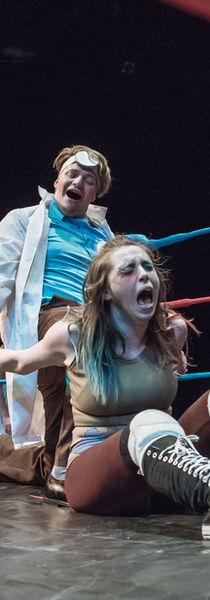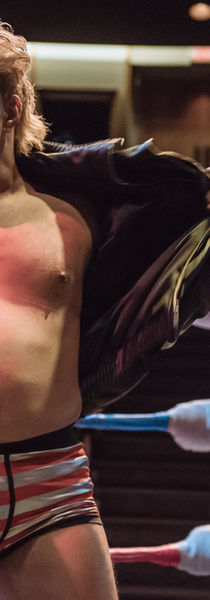
Zach McKendrick
Director. Maker. Facilitator.
Ph.D. Candidate: Computational Media Design
Drama, Performance and Extended Reality
University of Calgary
Calgary, AB
MFA: Directing
Expressionist Theatre in the 21st Century
University of Calgary
Calgary, AB
Art and Culture Specialist: Theatre and Performance Studies
Kayfabe: Professional Wrestling as Subversive Art
University of Toronto
Toronto, ON
![20190613_074802_IMG_6176[6135]_edited_edited.jpg](https://static.wixstatic.com/media/90ec0c_8cdd2698b34840e182140080dc8c6cdc~mv2.jpg/v1/fill/w_490,h_651,al_c,q_80,usm_0.66_1.00_0.01,enc_avif,quality_auto/90ec0c_8cdd2698b34840e182140080dc8c6cdc~mv2.jpg)
Bio
Hi, I'm Zach!
Thanks for stopping by.
I am a director, XR/VR/AR researcher, and interaction designer focused on human-centered design.
At the intersection of drama and technology, my work leverages performance practices to create immersive virtual reality experiences that support user engagement.
From drama and performance to digital technologies research, acting and directing, teaching and professional wrestling I've made a career by being comfortable outside my comfort zone. I view every challenge as an opportunity to grow as a human improve my techniques and expand my skillset. I believe in experiential learning and value collaboration. My creativity and flexibility mean I thrive in teams or leadership positions and am capable of switching roles easily.
Versatile and tenacious, I look forward to working with you to see how we can make the Human experience better in Human-Computer Interaction.
#performance #HCI #XR #VR #AR #UX #games
Publications





Homecoming: Exploring Returns to Long-Term Single Player Games
We present an autobiographical design journey exploring the experience of returning to long-term single player games. Continuing progress from a previously saved game, particularly when substantial time has passed, is an understudied area in games research. To begin our exploration in this domain, we investigated what the return experience is like first-hand. By returning to four long-term single player games played extensively in the past, we revealed a phenomenon we call The Pivot Point, a ‘eureka’ moment in return gameplay. The pivot point anchors our design explorations, where we created prototypes to leverage the pivot point in reconnecting with the experience. These return experiences and subsequent prototyping iterations inform our understanding of how to design better returns to gameplay, which can benefit both producers and consumers of long-term single player games.
BreachMob: Detecting Vulnerabilities in Physical Environments Using Virtual Reality
BreachMob is a virtual reality (VR) tool that applies open design principles from information security to physical buildings and structures. BreachMob uses a detailed 3D digital model of a property owner's building. The model is then published as a virtual environment (VE), complete with all applicable security measures and released to the public to test the building's security and find any potential vulnerabilities by completing specified objectives. Our paper contributes a new method of applying VR to crowd source detection of physical environment vulnerabilities. We detail the technical realization of two BreachMob prototypes (a home and an airport) reflecting on static and dynamic vulnerabilities. Our design critique suggests that BreachMob promotes user immersion by allowing participants the freedom to behave in ways that align with the experience of breaching physical security protocols.
Waiting in the Wings: Drones in Live Performance
Drones inhabit live performance spaces from Cirque du Soleil to the Olympics. Can Human Drone Interaction (HDI) research learn from live performance? This paper positions HDI research within a formal performance framework. We build on existing HDI and performance collaborations through Laban Movement Analysis (LMA), and present findings from a Performance Workshop (PW) conducted with professional performers focusing on the unique expressive qualities of drones. Our findings expand on LMA and contribute a drone-specific movement lexicon and framework for use in HDI research that introduces height and proximity as key factors in nonverbal communication. Additionally, we explore live performance applications as a new design space and classification system for HDI research use cases. We suggest that performance approaches can result in more intentionally expressive drones that improve communication providing deeper connections with human actors on stage and with audience members.
A Protocol for Improving XR and Game Performance
We offer a simple protocol designed to improve performance in technology-augmented experiences. Following professional performance practice, the techniques shared can be used in the studio or lab but are specifically designed to be practical for use in the wild, and with test subjects during research projects. By synthesizing commonly used performance practices, our protocol improves state-change efficiency to improve performance while using XR and game-based solutions in industry, academe, and entertainment. This practical intervention prioritizes healthy state change to improve performance while reducing any potentially negative impacts of such transitions.
Virtual Rehearsal Suite
Contemporary performance artists use Virtual Reality (VR) tools to create immersive narratives and extend the boundaries of traditional performance mediums. As the medium evolves, performance practice is changing with it. Our work explores ways to leverage VR to support the creative process by introducing the Virtual Rehearsal Suite (VRS) that provides users with the experience of a large-scale rehearsal or performance environment while occupying limited physical space and minimal real-world obstructions. In this paper, we discuss findings from scene study experiments conducted within the VRS. In addition, we contribute our thresholding protocols, a framework designed to support user transitions into and out of VR experiences. Our integrated approach to digital performance practice and creative collaboration combines traditional and contemporary acting techniques with HCI research to harness the innovative capabilities of virtual reality technologies creating accessible, immersive experiences for actors while facilitating user presence through state change protocols.
DIRECTING
Motivated by the pursuit of a complete work of art, my work smashes genres together, taking inspiration from classical art movements, POP and sub-culture to create immersive audience experiences.
I believe collaboration is the driving force behind creation and take joy in working with and learning from my collaborators to realize a shared vision.
























































